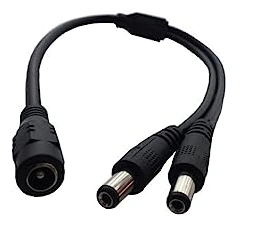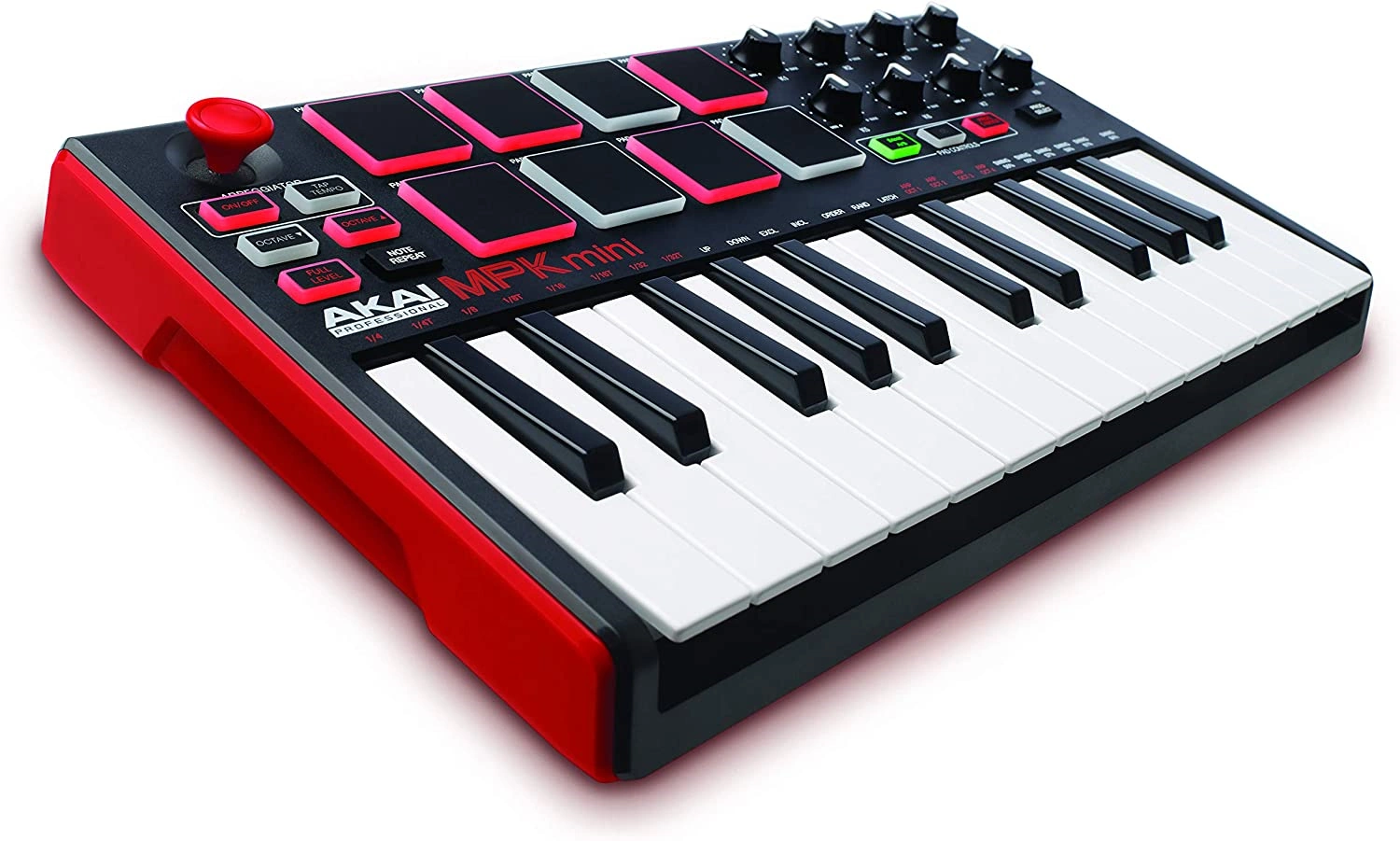Published 2023-06-14.
Last modified 2024-01-02.
Time to read: 3 minutes.
av_studio collection.
2024-01-02 Update
This article was written before I purchased an Ableton Push 3 Standalone (P3S). I am still learning how to use my P3S.
Portable Recording Setup
Below, you can see my battery-powered portable recording setup in action. Either Bluetooth speakers or a PA can be used, or various other connectors can be used to make sound. The old RME UC audio interface (partially hidden behind the keyboard and headphones) uses almost no power, so it runs for many hours on the blue battery.
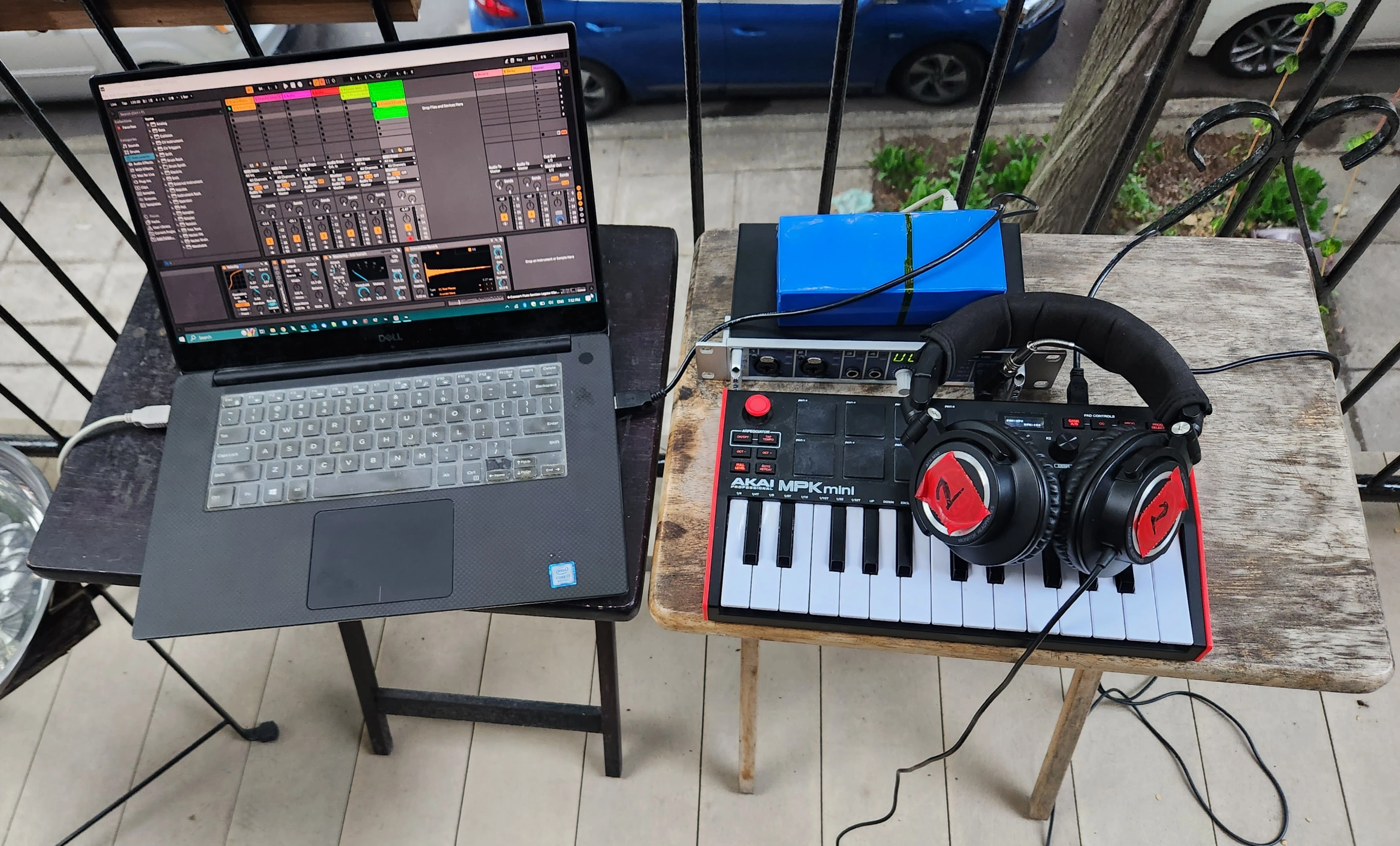
The blue battery is made by many companies in China; this one is an ABENIC Super Polymer Rechargeable 20000mAh Lithium-ion Battery DC 12V. I also use this battery to power my Shure wireless receiver when I need a wireless microphone.
This battery could extend the internal battery in my Dell XPS 15 9570 laptop while continuing to power the RME UC by using a 5.5mm x 2.1mm Y splitter (1 female to 2 male connectors).
I have a comment about the red and black Akai MPK mini keyboard controller in the MIDI Velocity Compander section below.
Packing the Setup
I pack the setup, fully connected, into an SKB 1SKB-SC2311 Soft Case, measuring 23″ x 11″ x 3.75″. The SKB 1SKB-SC2311 case is terrific – light, robust, and an excellent thermal insulator. It is usually easy to transfer the contents onto a flat, hard surface before using them.
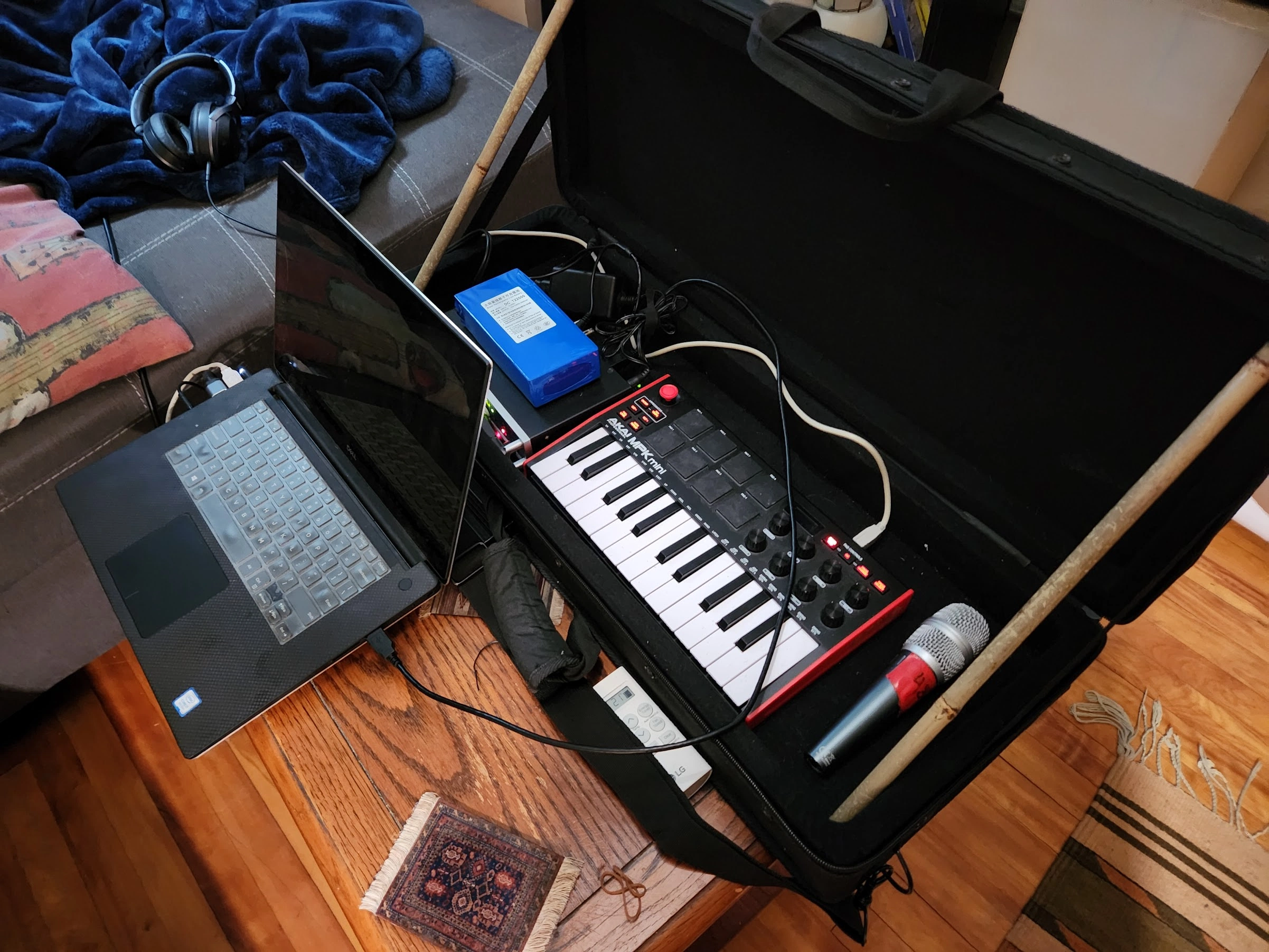
Leaving the RME UC audio interface turned on in a small, enclosed space is a serious fire hazard.
Do not leave the RME UC turned on while inside the case.
Always place RME audio interfaces in well-ventilated areas before turning them on.
DO NOT CLOSE THE CASE WHILE THE RME UC IS ON.
The setup in the above photo should not be turned on until the RME UC is removed from the case.
This is all true even when the RME UC is running on the battery.
MIDI Velocity Compander
The Akai MPK mini keyboard controller is inexpensive but capable. That is good for traveling because if it is lost or damaged, replacing it is not a financial burden. Also, having two of these keyboards would allow a dedicated keyboard for each hand.
I found that the keyboard did not have a smooth transition from soft to progressively harder velocity. The keys seem to have a strongly non-linear response; this is evident when playing a note many times, so each key press is a little bit harder than the previous keypress; the MIDI velocity suddenly increases at some threshold.
After a short search, I found Ableton Live’s velocity modifier, which can act as a compander for MIDI velocity. This MIDI effect should be inserted at the beginning of every instrument effect chain that the Akai MPX mini is connected to.
The following image shows the effect chain for a Concert Flute Section Legato Vibrato instrument. The left-most box shows the velocity effect setting that I dialed in, so it acted as a compander.

It worked perfectly! I was able to play with a light touch. Subtle changes in velocity were amplified. Hammering hard on the keys did not cause problems.
The compander has entirely changed the playability characteristics of the keyboard. This emulation of a much more expensive keyboard works surprisingly well. I wonder what would happen if I tried this technique on a better keyboard, perhaps a Yamaha YC61 61-key stage keyboard? Is the potential improvement asymptotic to nirvana?
Korg has been offering me the opportunity to upgrade my $125 hardware with $125 software. Surprise! I am not interested. This is a cheap instrument. There is no way I would spend that kind of money on a software enhancement. The keys are 3/4 size. The idea is that this is a portable, throw-away device, not an investment.
Watch The Music Video
You can watch a video of the composition playing on the Mike Slinn Music Facebook page.
EZ Drummer 3
EZ Drummer 3 can work as a plugin with Ableton Live. You will find the EZ Drummer 3 plugin in the Plug-ins / Toontrack area.
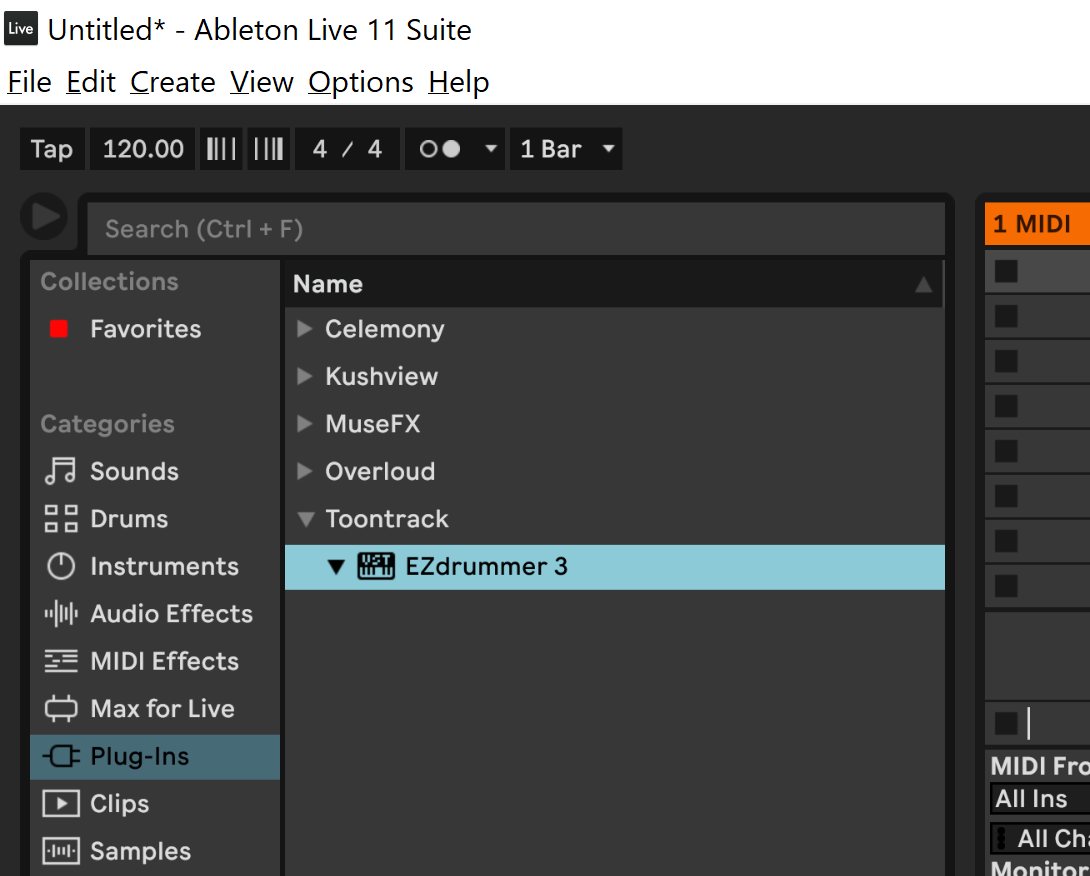
About Mike Slinn
Mike Slinn did his undergraduate electrical engineering project on computer music in 1979. “ARP-EM” was an ARP 2600 clone written in PDP-11 assembly language and used a light pen interface over real-time graphics. Mike played his Les Paul guitar into the A/D converters, then his PDP-11 assembler program processed the inputs, and the D/A converters played the results.
Music has been a big part of Mike’s life ever since.

